Summer Honey Mead is an easy to make herbal beverage that preserves the summer goodness for winter ills. Old timers preserved herbs in many ways to get through the long winter months of ice and snow. Honey mead is a refreshing vehicle for herbs.
Honey mead is fermented wine sweetened with honey instead of sugar. It contains all the healthy elements that are resident in the honey as well as healthful probiotics. Honey mead traditionally was used as medicine to preserve the medicinal benefits of herbs into the winter, without the need for distillation, which was highly controlled and taxed. Dandelion mead is a traditional wine, made in early spring from dandelion flowers, but used in the winter to help with cold and flu symptoms. Elderberry mead, made from the berries, is also used for boosting the immune system in winter to keep colds and flu away.
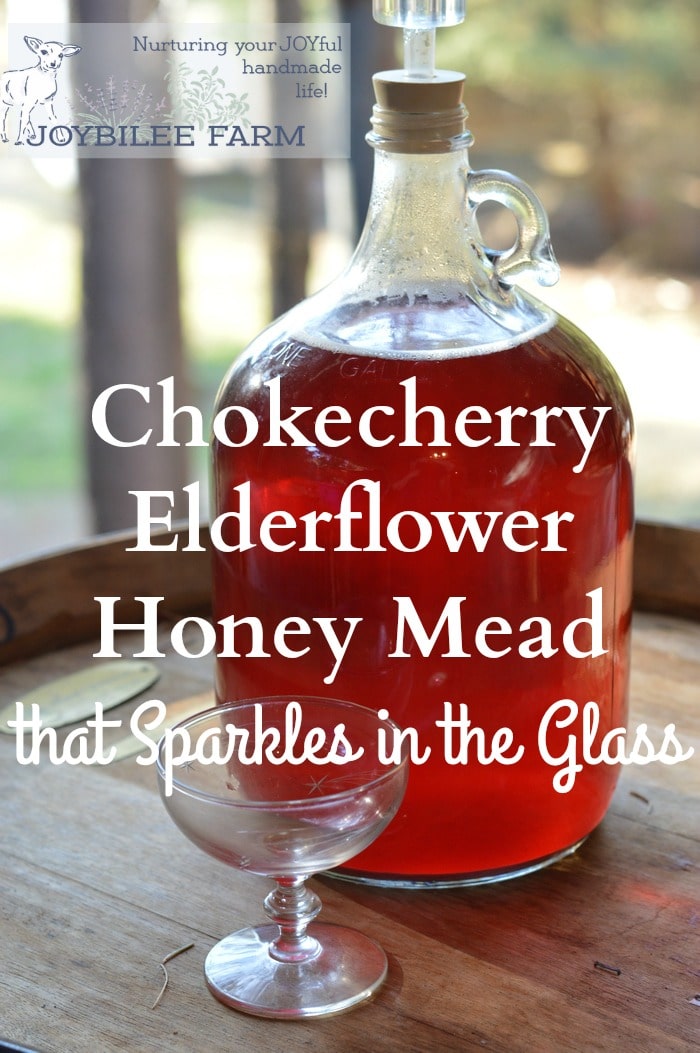
What you need to know about mead making:
You can make mead in small batches just one gallon at a time. That means over the course of a summer garden season you can make many different herbal meads as your herbs become prime. While I’ve never had a gallon of mead not turn out, (I’ve made a dozen gallons now) if it did mess up, it would not be a huge loss.
You’ll need one glass gallon jug and one fermentation lock for each batch of mead you want to make PLUS one extra glass gallon jug for siphoning off the mead when you are ready to rack it. (That just means pulling the top liquid off of the dregs into a fresh jug, so that fermentation can continue.)
You’ll also need a food-safe siphon hose – I used an aquarium hose that I reserve for wine making. While you can get fancier equipment from wine making supply stores, mead making can be done with the simplest equipment. You’ll also need 5 wine bottles with corks or caps to hold your finished wine. And if you choose corked bottles a wine bottle corker is essential.
Honey mead making is very forgiving. You don’t need to measure exactly. You don’t need to be perfectly sterile. Clean and sanitized is good enough.
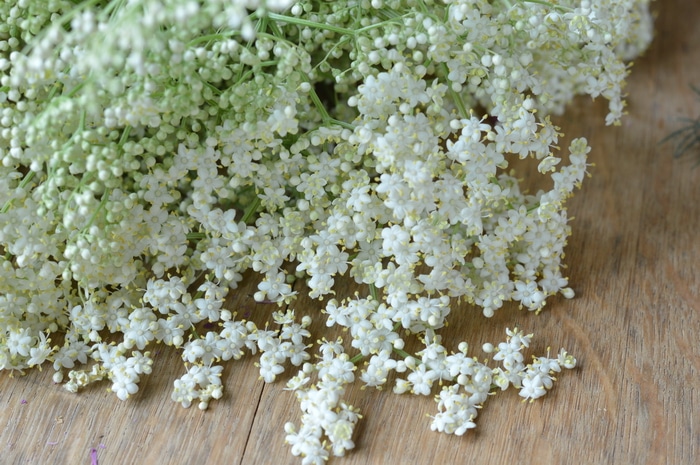
Here’s the basic honey mead recipe:
You can use this ingredient list to create your own mead recipe using herbs and fruit that you have readily available to you. The grape juice and orange juice plus raisins in the ingredient list is used as a yeast nutrient. I’ve also used sliced lemons and raisins in the recipe in place of the commercial juice. Don’t skimp on the honey though. You need to full ration of honey to give the yeast enough nutrients and to do its alchemy.
This amount makes 1 gallon of mead or 5 — 750ml wine bottles of finished mead. You can easily double or triple the amount of ingredients and fill more bottles but I like to make different kinds of mead to have some variety in my herb storage for the winter. Try elderberry, raspberry, blue berry, matched with lemon balm, elderflower, or rose petals. Use whatever you have growing in your garden and you’ll create the most amazing local flavors you can imagine. Mead making is a joyful and worthy pastime.
Remember to take notes. If you find an exceptionally delicious combination you’ll want to repeat it in future years.

Basic ingredients:
3 cups of honey
1 ½ cups of herbs
6 cups of berries or fruit or 6 cups of fruit juice
10 cups of filtered water
½ cup of grape juice concentrate or orange juice
½ cup of organic raisins, if you are using orange juice
¼ teaspoon of champagne yeast or wine yeast
See the method below in the Elderflower – Chokecherry Mead recipe
Print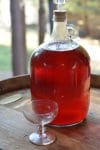
Chokecherry Elderflower Mead Recipe
- Yield: 5 x 750ml bottles 1x
Description
Chokecherries are rich in antioxidants and anthocyanins. Elderflowers, too, help fight winter colds and flu symptoms. This honey mead will preserve the goodness of summer herbs and fruit for winter.
Ingredients
- 1 cup of elderflowers, de-stemmed
- ½ cup of rose petals
- 8 – 10 cups of water, filtered, divided
- 3 cups honey
- 6 lbs. Chokecherries or 6 cups of chokecherry juice
- 1/2 cup of grape juice concentrate
- ¼ teaspoon champagne wine yeast
Instructions
- Place elderflowers and rose petals in a 2 quart, heat proof bowl. Pour 4 cups of boiling water over them and cover. Let steep for 1 hour, covered. Strain the tea. Stir the honey into the warm tea. Set aside.
- Meanwhile, remove the stems from the chokecherries and place them in a steam juicer. Steam until the juice flows freely. If you don’t have a steam juicer, simmer the cherries in a pot with 2 cups of water for 30 minutes until cherries are steaming. Strain through a jelly bag or through cheese cloth. It’s alright to squeeze the jelly bag to retain as much juice as possible. While the juice will be cloudy it will clear during the fermentation process.
- Reserve the juice. Discard the pulp and seeds.
- Sanitize a 1 gallon glass fermenting jug, along with its tin cap. Pour the herb and honey mixture into the fermenting jug. Add the chokecherry juice.
- Pour the grape juice concentrate into a glass. Stir in 1 cup of water. Allow it to come to room temperature. Sprinkle the yeast over top of the grape juice. Wait 30 minutes. Stir the yeast into the grape juice and wait till it becomes frothy or bubbly.
- Pour the grape juice – yeast mixture into the fermentation jug. Cap the jug and shake it for a few minutes to finish dissolving both the yeast and the honey. Add the cooled honey-herb tea to the fermentation jug. Top up the jug to the shoulders with boiled and cooled filtered water.
- Sanitize a wine fermentation lock. Fill the fermentation lock with boiled and cooled water. Replace the cap on the fermentation jug with the fermentation lock.
- Place the jug on a plate to catch any overflow. Place the jug in a spot out direct sunlight and away from source of heat, for several weeks. The fermentation will become active with bubbling and frothing evident.
Racking off
- After 4 to 6 weeks you’ll notice that the fermentation has slowed down and sediment is forming in the bottom of the jug. The mead is still not clear though. When the bubbling and frothing stop, transfer the liquid to a fresh, sanitized fermentation jug. Sanitize the fermentation lock again and place it on the new fermentation jug. The fermentation process will resume.
Clear the mead
- This last fermentation can take anywhere from 2 to 6 weeks. When the fermentation stops, the wine will clear. If it doesn’t clear naturally add ¼ teaspoon of pectinase to the jug. Replace the fermentation lock and wait.
Bottle the mead
- When the wine clears and fermentation stops, siphon the mead into sanitized wine bottles. Cap with a wine corker or a twist cap according to your bottles. Label the bottles.
- Place the wine bottles in a cool, dark spot. Age at least 3 months before sampling. Mead get better the longer it sits.
Notes
Use the wine to stay healthy in winter and to ward off cold and flu symptoms. Or just enjoy this sparking, ruby red, mead, full of healthy antioxidants.
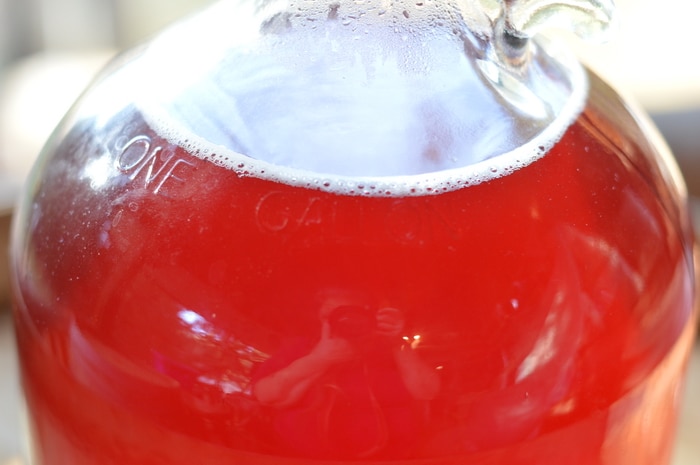
Elderflower – Chokecherry Mead
Yield: 5 — 750ml bottles
- 1 cup of elderflowers, de-stemmed
- ½ cup of rose petals
- 8 – 10 cups of water, filtered, divided
- 3 cups honey
- 6 lbs. Chokecherries or 6 cups of chokecherry juice
- 1/2 cup of grape juice concentrate
- ¼ teaspoon champagne wine yeast
Directions:
Place elderflowers and rose petals in a 2 quart, heat proof bowl. Pour 4 cups of boiling water over them and cover. Let steep for 1 hour, covered. Strain the tea. Stir the honey into the warm tea. Set aside.
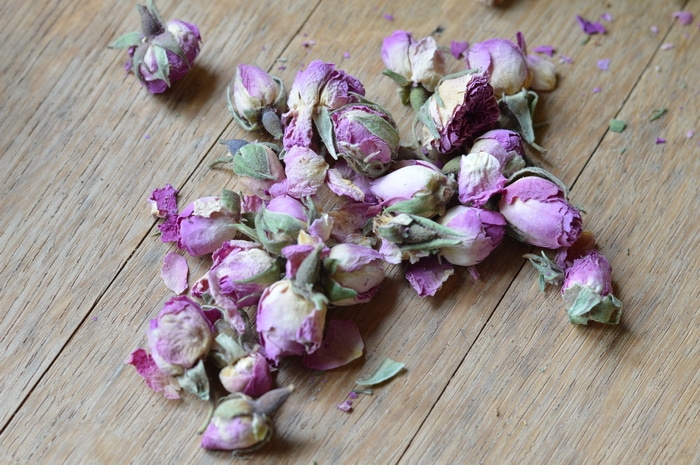
Meanwhile, remove the stems from the chokecherries and place them in a steam juicer. Steam until the juice flows freely. If you don’t have a steam juicer, simmer the cherries in a pot with 2 cups of water for 30 minutes until cherries are steaming. Strain through a jelly bag or through cheese cloth. It’s alright to squeeze the jelly bag to retain as much juice as possible. While the juice will be cloudy it will clear during the fermentation process.
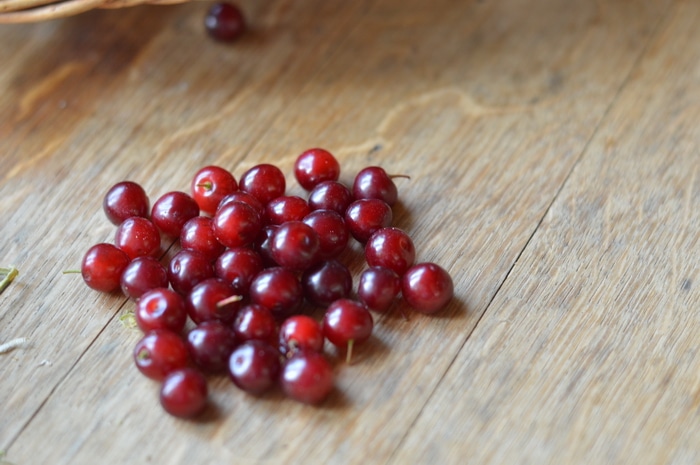
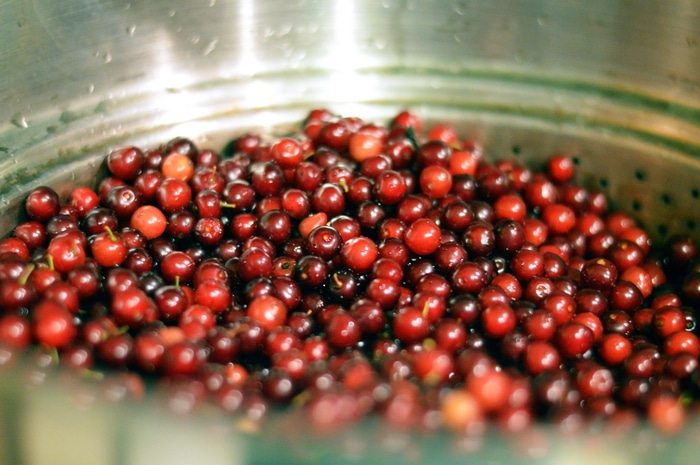
Reserve the juice. Discard the pulp and seeds.
Sanitize a 1 gallon glass fermenting jug, along with its tin cap. Pour the herb and honey mixture into the fermenting jug. Add the chokecherry juice.
Pour the grape juice concentrate into a glass. Stir in 1 cup of water. Allow it to come to room temperature. Sprinkle the yeast over top of the grape juice. Wait 30 minutes. Stir the yeast into the grape juice and wait till it becomes frothy or bubbly.
Pour the grape juice – yeast mixture into the fermentation jug. Cap the jug and shake it for a few minutes to finish dissolving both the yeast and the honey. Add the cooled honey-herb tea to the fermentation jug. Top up the jug to the shoulders with boiled and cooled filtered water.
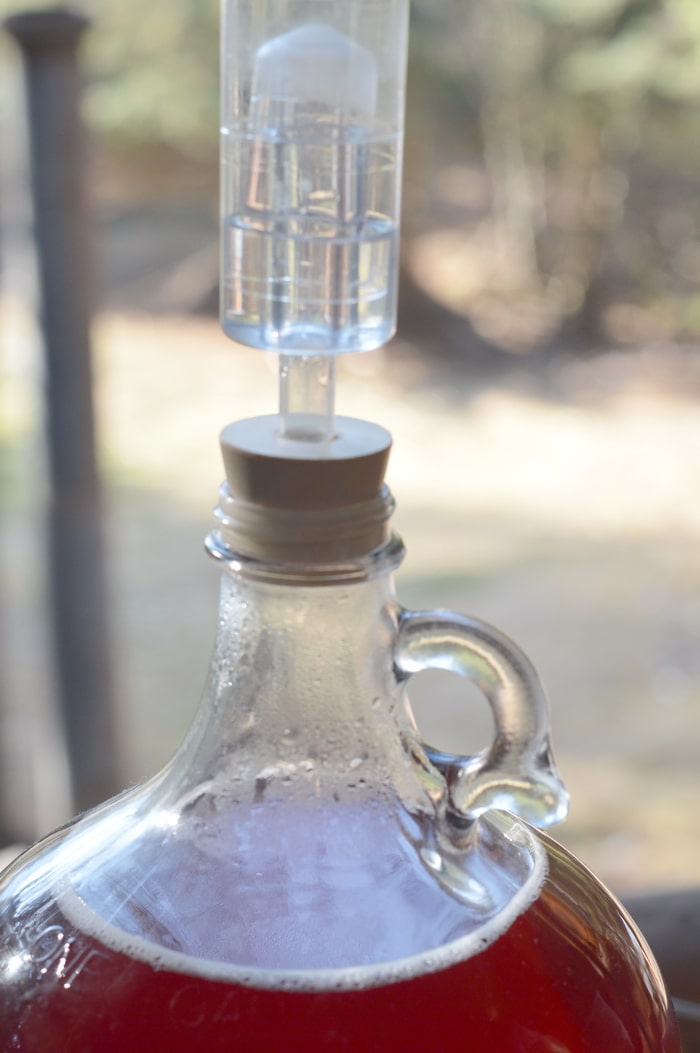
Sanitize a wine fermentation lock. Fill the fermentation lock with boiled and cooled water. Replace the cap on the fermentation jug with the fermentation lock.
Place the jug on a plate to catch any overflow. Place the jug in a spot out direct sunlight and away from source of heat, for several weeks. The fermentation will become active with bubbling and frothing evident.
Racking off
After 4 to 6 weeks you’ll notice that the fermentation has slowed down and sediment is forming in the bottom of the jug. The mead is still not clear though. When the bubbling and frothing stop, transfer the liquid to a fresh, sanitized fermentation jug. Sanitize the fermentation lock again and place it on the new fermentation jug. The fermentation process will resume.
Clear the mead
This last fermentation can take anywhere from 2 to 6 weeks. When the fermentation stops, the wine will clear. If it doesn’t clear naturally add ¼ teaspoon of pectinase to the jug. Replace the fermentation lock and wait.
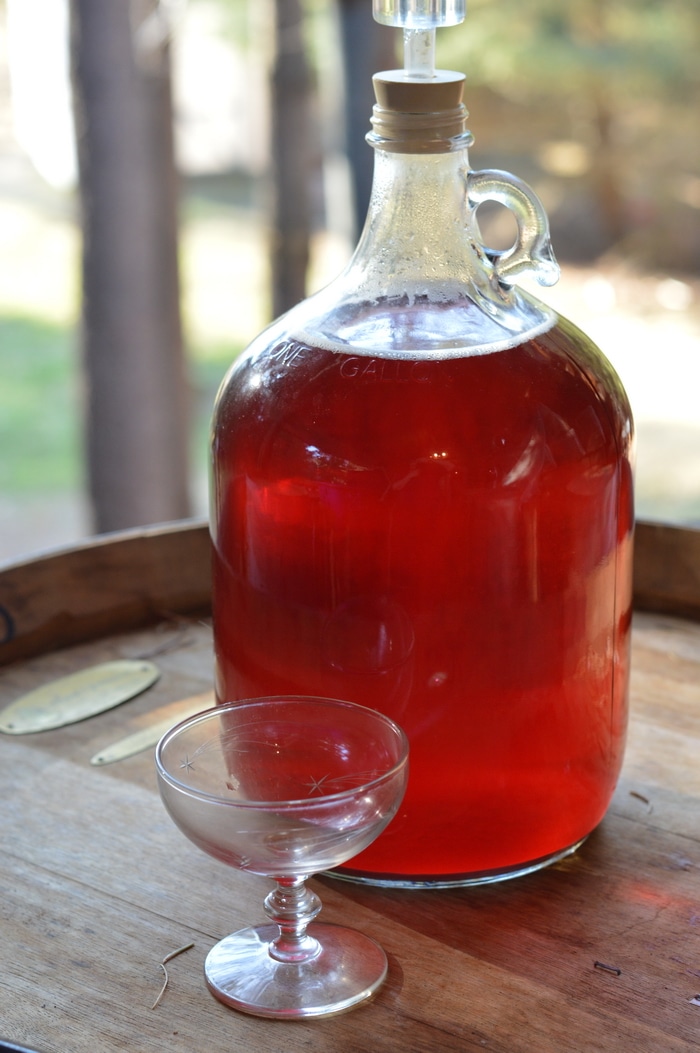
Bottle the mead
When the wine clears and fermentation stops, siphon the mead into sanitized wine bottles. Cap with a wine corker or a twist cap according to your bottles. Label the bottles.
Place the wine bottles in a cool, dark spot. Age at least 3 months before sampling. Mead get better the longer it sits.
Use the wine to stay healthy in winter and to ward off cold and flu symptoms. Or just enjoy this sparking, ruby red, mead, full of healthy antioxidants.
Learn More
Learn to make Herbal Mead , Beer, and Ale from The Herbal Academy, Herbal Fermentation online course




I use the frozen grape juice concentrate. But if I had fresh grape juice I’d use that.
Eager to try this. When you speak of grape juice concentrate, do you mean frozen juice? (many bottle juices contain chemicals that inhibit yeast). Also, any specific color for rose petals? there are pink wild roses that grow in our area.
I guess it depends on where you live. We’re in Utah, where these berries grow wild, even in my yard! Check around with your local garden and landscape resources and they can likely guide you to a good chokecherry source. Good luck!
Hello….I’d love to know where you get your chokecherries? My grandmother used to make chokecherry jelly every Christmas — on the adults got some. I’ve been trying to find where to purchase them, but nothing yet.